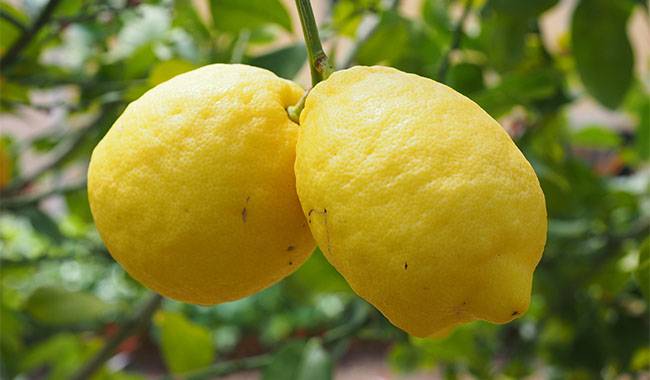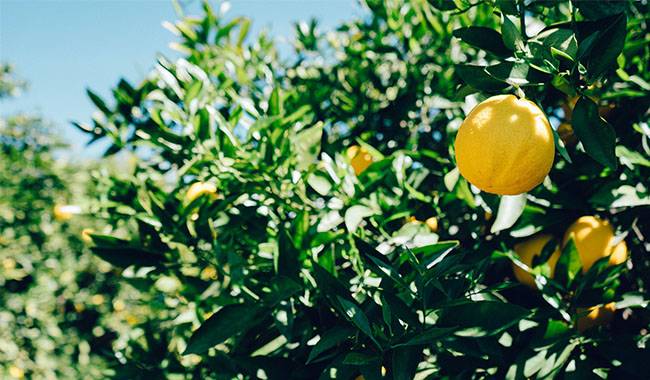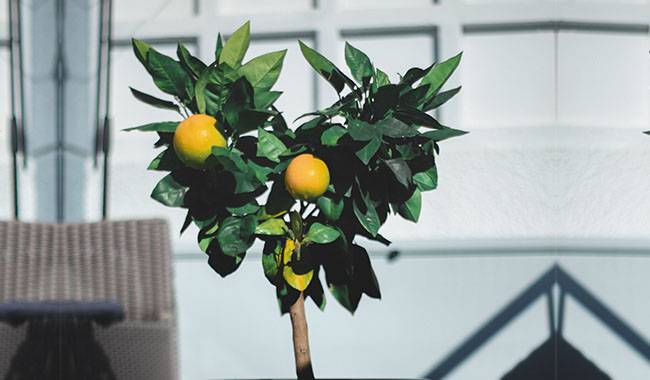
Lemons are one of the easiest varieties of indoor fruit trees to propagate. However, tempted by the ease of growing lemons from seed pots or cuttings, flower growers often make the major mistake of expecting quick results. The lemon is the most capricious citrus houseplant. It takes many years to flower and fruit, and growth problems are the plant’s first response to any deficiencies in conditions or care. And figuring out why lemon trees don’t grow isn’t always easy, because you have to analyze every nuance of cultivation. You will learn 10 Tips to Improve Growth for Lemon Tree Growth Stops or Slows in the ThumbGarden article.
Colorful, filling the house with unmistakable fragrance, harvesting delicious, and appealing all year round, indoor lemons are not so beloved by accident. They respond to proper care with even more ornamental greenery and an abundance of flowers and fruits. But they are also more sensitive to deviations from these conditions than their counterparts.
Unless lemons are provided with the blessed climate of their usual southern counterparts, they will not succeed. Lemons are subtropical stars that need cool breaks and exposure to fresh air and consistency. Without ideal care and optimal conditions, lemon problems cannot be avoided.
And the most common of these are stopping or slowing growth, disrupting the rate of growth of branches and leaves, along with other symptoms. Consider the possible causes of lemon tree growth problems. If your lemons grown from seed or cuttings are not growing, these are worth checking one by one.
1. Disturbed dormancy or absence of dormancy
The most common reason for lemon trees to stop growing, sometimes suddenly after a period of vigorous development, and for some or all of the leaves to fall off, is improper overwintering. Lemons need a cool dormant period – from an ideal 44-50 °F (7-10 °C) to at least 59 °F (15 °C).
In addition, during this period, it needs more light to compensate for the reduced winter sunlight hours, less watering to reduce substrate moisture and a complete cessation of fertilization. Warmth, excessive watering, and winter fertilization can all cause growth problems together or separately.
2. Incorrect transplanting or soil
Lemons need replanting only when needed – after the plant has filled in the root ball. It is equally detrimental to replant unnecessarily or not to replant when the root system has nowhere to develop.
For lemons, you should choose containers with large drainage holes corresponding to the volume of the rootstock, adding a few inches at a time – deep and wide enough, but not too spacious or crowded.
Lemon trees do not tolerate deep planting: the root neck of the seedling should not be submerged, keeping it in line with the soil to avoid the risk of rotting. After planting, water it carefully and let it acclimatize in cool, soft light and very high humidity – then move it to its usual position.
Very often, poor-quality substrates or a wrong choice of substrate can cause a lemon tree to fail to grow. Lemon trees prefer peat-free, loose, nutritious, and breathable substrates based on leafy, grassy soils, inert additives, and sand – the special multi-component substrates used for citrus or cadmium plants. For these, it is necessary to add loosening agents such as coarse sand, vermiculite, perlite, coconut fiber, etc. to the soil.
3. Overwatering and rotting
If it is not a problem of overwintering or soil, when lemons grow poorly, humidity and its consequences should be suspected. In spring and summer, water lemons heavily, but not too much – let the topsoil dry out and avoid drought. In winter, water sparingly, keeping a light, steady moisture content that dries the soil more.
Incorrect watering, inadequate drainage, soil compaction, waterlogging, and root rot begin to appear. To diagnose this problem, check the substrate, the moisture in the middle layer, the top of the soil, and the tray for signs of mold and sourness.
You can gently remove the plant along with the root ball and check the roots and soil on the outside to see if everything is okay. If the disturbance is not systemic, you can try drying the soil. However, if there is an unpleasant smell and signs of mold or rot, an emergency transplant is the only way to save the lemon. The substrate should be completely removed and the roots checked by removing any damaged areas and treating the cut. Transplant to a new, clean substrate.
Incorrect (uneven) watering on one side of the pot can sometimes cause growth problems.

4. Sudden changes in conditions
Lemons, like all citrus fruits, respond very poorly to changes in temperature, light, humidity, and ventilation – to the detriment of any of these. Plants that are moved quickly to completely different conditions will lose their leaves, produce poor fruit and slow down their growth rate. This is how lemons, especially young ones, often react when they are turned even in relation to light sources.
Lemon trees should be given time to adapt to intermediate conditions. However, lemons soon get used to improved conditions – more light, stable temperatures – and respond strongly and positively.
Often, constant fluctuations in ground temperature – too hot or too cold from the air, contact with the surface, or cold watering at any time of the year – can lead to poor lemon growth.
5. Lack of lighting
Lemon trees need bright light and long periods of light (increase light in the fall and winter to maintain the usual amount of light). If there is not enough light, if lemons are not placed on a windowsill or north-facing window, the plants will elongate, lose their leaves, and change color if there is no additional light. Most importantly, they stop growing.
6. Wrong water
Lemon trees are sensitive to watering with hard water, water that is not soft enough, and cold water. The water temperature should always be quite higher than the room temperature. And for this citrus tree, it is best to use melted water, rainwater, or filtered water.
7. The air is too dry
Lemon is like normal but not extremely dry air. For it, it is very important to spray or take other measures to ensure that the humidity does not fall below 45%. If the cessation of growth is accompanied by leaf loss, it is best to create greenhouse conditions for the lemon by installing a hood or mini-greenhouse.
8. Inappropriate fertilizer
Lemons need nutritious soil. They should only be fertilized during the peak growth period, every 2-3 weeks, with a special or general-purpose fertilizer in rotation with organic fertilizers.
If the growth problems of shoots and new leaves are accompanied by deformation and discoloration, discoloration, fading, or yellowing of the leaves, it is worth checking for nutrients or deficiencies, or excesses of certain macro and micronutrients.
It is best to focus on traits that are common to all plants. By analyzing whether the nutrients match the developmental stage and personal preferences of the lemon, you can quickly adjust the fertilization program and fertilizer composition. The ensuing signs will enable you to pinpoint the substances that the plant is deficient in.

9. Lemon trees bloom too much
Many new early lemon varieties tend to bloom like crazy, but they often lack the resources to mature all the buds and will drop their leaves, stunted, and produce small (and poorly ripened) fruits. Fruit set must be regulated by partially cutting off the immature flower buds.
10. Continuous pest and disease control
Regular inspection of leaves and soil, shoots, and buds can prevent serious problems. Scab, aphids, spider mites, rusts, and rots need to be detected early. The more infested a plant is, the more damage the growth will suffer.
If you find signs of infestation, isolate the plants immediately and begin control with fungicides or insecticides.



